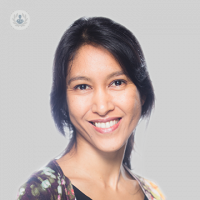Can you be too old for the orthodontist?
Written by:For most people, braces were something you wore in your childhood or during your awkward teenage years. However, now there are more and more people in their adult years seeking help from the orthodontist for misaligned teeth – either from birth or from previous problems such as gum disease. So is there an upper age limit to treatment – and what is orthodontic treatment like as an adult? We interviewed specialist London-based orthodontist Dr Chaw-Su Kyi to find out:

Is it possible to be too old for the orthodontist?
Definitely not! Our oldest patient currently undergoing treatment is 76 years old and progressing very well with their orthodontic treatment with Invisalign. The number of adult patients seeking treatment is actually on the increase.
The most important factor irrespective of age, is the health of the teeth and gums. All patients having orthodontic treatment must have healthy teeth and gums before starting their brace treatment. This means no active tooth decay, no active gum disease and being able to maintain excellent oral hygiene.
As long as the teeth and gums are healthy, age is not a barrier for orthodontic treatment.
Is orthodontic treatment different in adults?
Generally, brace treatment to straighten teeth in adults is not too much different from treating children. The main difference is the fact we do not have growth and development of the jaws and teeth. This may result in different treatment options, and treatment time may be longer especially if we have to remove teeth.
Nonetheless, we have the same options of fixed braces, Invisalign and lingual braces. We also have the same retention treatment, which is essential to reduce the risk of relapse and movement. The most important factor is having good stable dental health.
We often see adults who may have had brace treatment as a child and the teeth have relapsed over time. This is often due to not having retainers fitted and therefore the teeth have moved back over the years. Treating relapsed cases is quite complex as they may have had previous extractions, arch narrowing, 'bite' problems, and you can only work with 'what's left in the mouth'. We have considerable experience with these complex cases, with some patients having been declined treatment elsewhere after being informed to 'accept the teeth'.
With proper brace treatment to get the teeth straightened effectively, adults can have an amazing smile without having to resort to veneers, which can be more destructive to the enamel.
What if someone has implants?
Orthodontic treatment is often needed to move the teeth into the right position to allow implants or bridges to be fitted. To allow implants or bridges to be placed, we need to ensure the teeth and their roots are straight with adequate space to fit an implant or bridge.
If there is an existing implant, brace treatment can still be carried out, but the implant itself cannot be moved. The surrounding teeth can be moved and straightened around the implant fixture.
If you are planning on having an implant or a bridge, it is important that you are assessed by the orthodontist, implantologist and dentist to ensure that your treatment is planned and your whole dental team is working together to achieve the same goal. If you are considering changing your existing bridge, again it is important to have an orthodontic assessment if recommended by your dentist – as the teeth can be moved and the new bridge fitted to your new smile.
What if someone has tooth or gum disease?
Orthodontic treatment needs to be carried out on healthy teeth and gums. If there is active dental decay or active gum disease, this must first be treated by your dentist. Once the teeth are healthy and stable, brace treatment can be carried out.
Even if you have had gum disease (periodontal disease) and the gums have receded, you can still wear braces. Often with gum problems, there is associated gum recession and 'drifting' of the teeth which can result in gaps between your teeth or the teeth moving forwards (sticking out). Orthodontic treatment with Invisalign or fixed braces can move the teeth and straighten them to improve the appearance and often the 'bite'.
As long as the orthodontic treatment is carried out carefully with gentle pressure, there is little increased risk to the gums. During treatment, it is important to maintain your regular 'cleaning' visits with your dentist or hygienist.
Dr Kyi has considerable experience in all brace and teeth straightening options from working in multiple world class London hospitals. To view Dr Kyi’s availability and book a consultation, click here.


